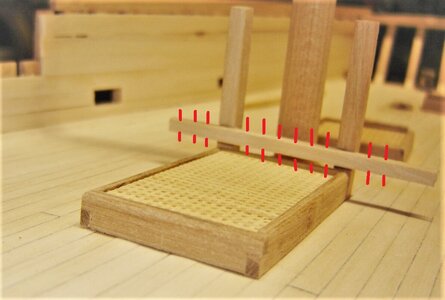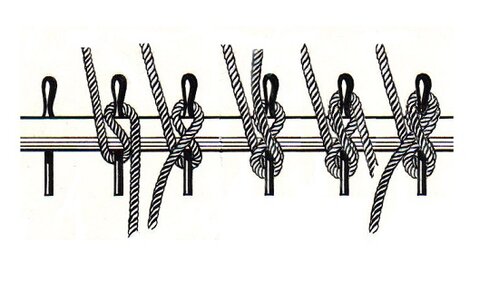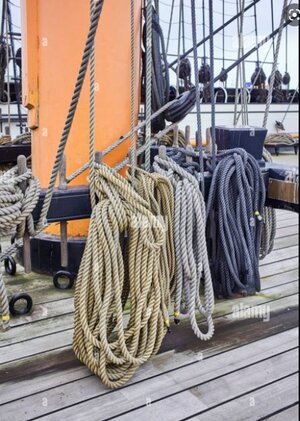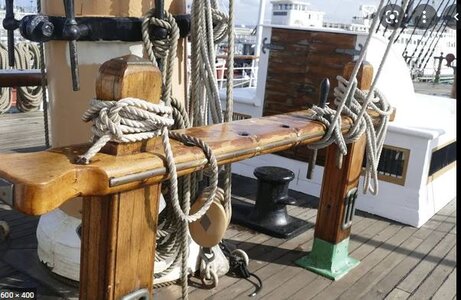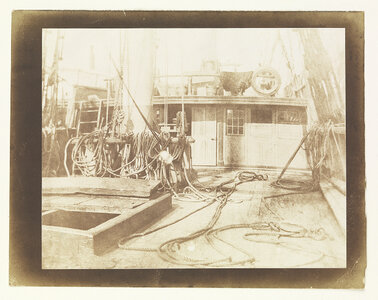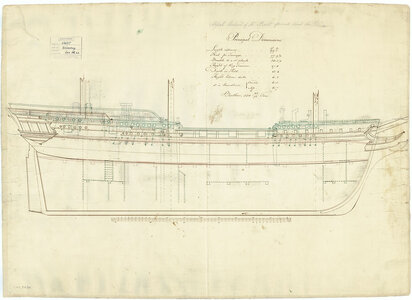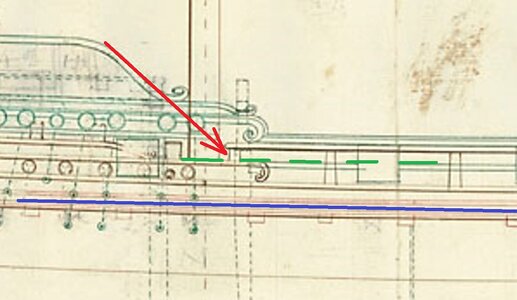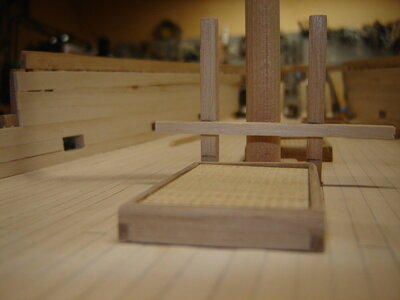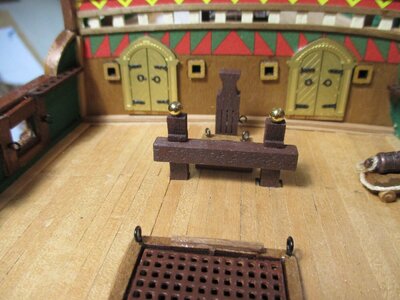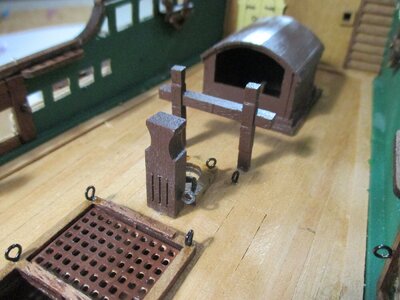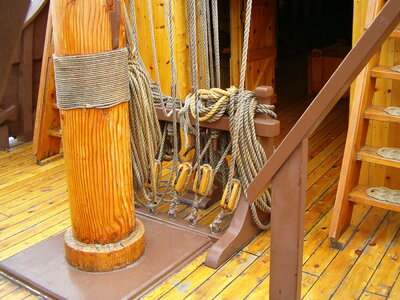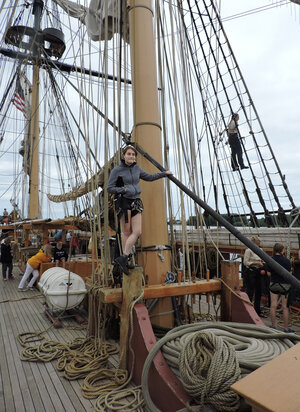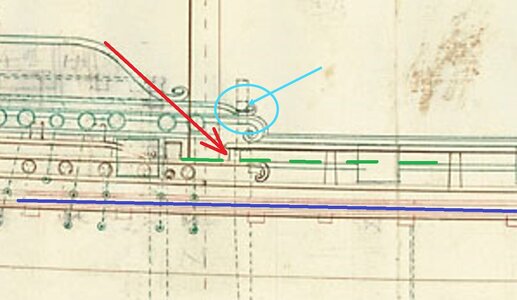Here's a picture of the trial fit of the main bitts on the Discovery1789. The coaming is 12" high like Steele says it should be and the top of cross piece is 1'8" high, also like Steele says. If I'm right this cross piece has a bunch of belaying pins in it. How short were these people? My wife is 5'2" and 1'8" is just above her knees. If I were tying ropes al day I would want the cross piece waist height at least. Am I missing something here? Why are these things so low?
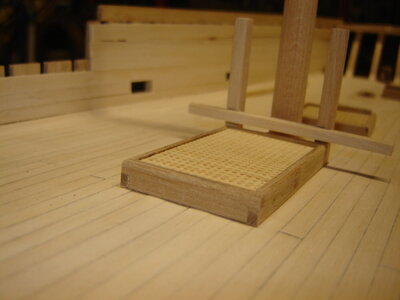

Last edited by a moderator:




